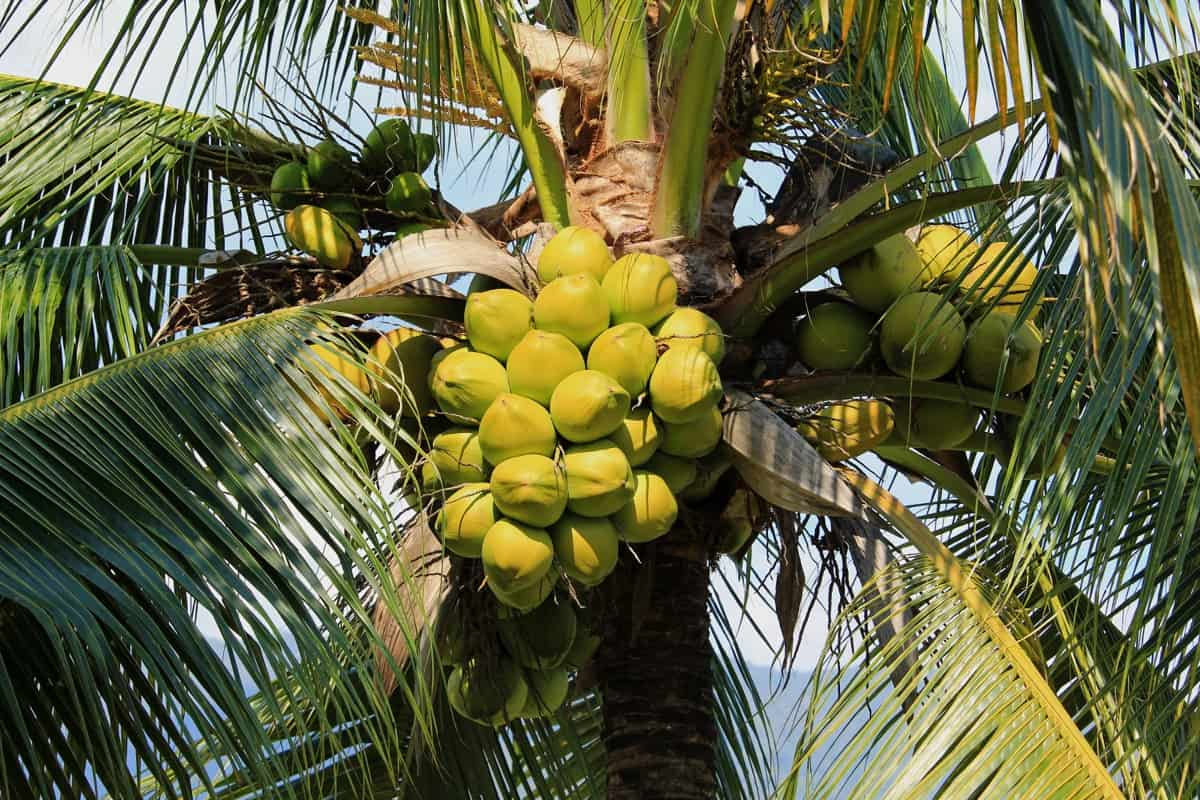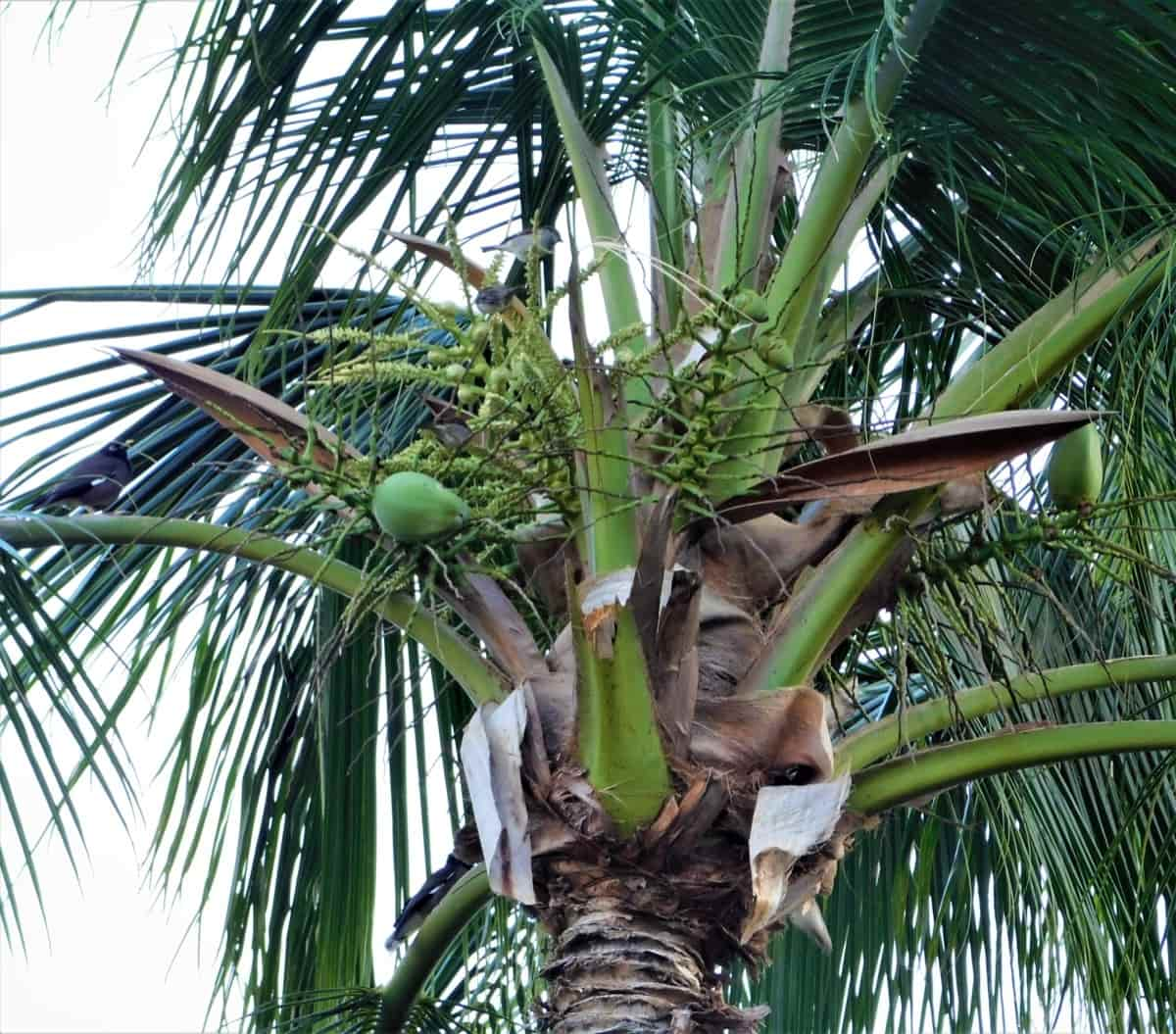Coconut trees are a crucial crop for many tropical countries, providing economic and nutritional benefits. However, the production of coconuts relies heavily on the presence of female flowers responsible for fruit formation. Hence, increasing the number of female flowers on coconut trees can significantly impact coconut yields.

Techniques such as using plant growth regulators, hand pollination, and selecting high-yielding varieties can enhance the reproductive efficiency of coconut trees, resulting in higher coconut yields. Improving coconut yields is vital for sustaining the livelihoods of millions of people who depend on coconut farming for food security and income.
How to Increase Female Flowers in Coconut
Introduction to Coconut cultivation
Coconut cultivation is an important economic activity in various tropical regions globally. The coconut palm, popularly called the “tree of life,” is highly valued for its diverse uses in food, medicine, and construction. Coconut fruit is a source of coconut water, a popular beverage, and coconut meat, which is widely used in cooking and food processing. Additionally, coconut oil extracted from coconut meat is vital in products like soaps, detergents, and cosmetics. Coconut trees require hot and humid conditions and well-drained soil, making coastal areas suitable for their growth.
Growing coconut trees involves planting seedlings, controlling pests and diseases, managing weed growth, and fertilizing the soil. Harvesting is mainly manual, with workers climbing tall trees and cutting the coconuts with machetes. Coconut farming provides a vital source of livelihood and income for millions of individuals worldwide, particularly in developing nations. Sustainably managing and producing coconut crops can boost economic development, reduce poverty, and enhance food security in these regions.
Understand the Anatomy of Coconut Flowers
Six thin yellow perianth leaves surround male coconut flowers, containing six stamens and three nectar glands at the center. Upon opening, the anthers split longitudinally, releasing copious amounts of yellow pollen for about 24 hours before dropping or continuing to anthesis for 18-20 days. The pollen can remain viable for 2-9 days after discharge. In contrast, female coconut flowers, also known as ‘buttons,’ are spherical and comprise six fleshy The pistil of the female coconut flower is surrounded by perianth leaves, which are typically fleshy.
The pistil itself is usually white and has three ridges that converge at the tip, forming a triangular shape. That converges at the tip. As the flower develops, the ridges split open, exposing the sticky surface of the stigma, which extends as three erect teeth. Normally, female flowers open by the 21st day, but during summer, they may open as early as the 19th. The female phase lasts for 4-7 days.
Best Variety of Cultivation Coconut
| Malayan Dwarf | Malayan Yellow Dwarf |
| Fiji Dwarf | Samoan Dwarf |
| Chowghat Orange Dwarf | San Ramon Tall |
| Niu Leka Dwarf | Malayan Red Dwarf |
| Yellow Dwarf | Cochin China Dwarf |
| Macapuno Dwarf | Andaman Ordinary |
| Laguna Tall | Chandan Dwarf |
| Sri Lanka Green Dwarf | Java Tall |
| King Coconut | Jamaica Tall |
| Panama Tall | Mozambique Tall |
| Vanuatu Tall | Nias Dwarf |
| West Coast Tall | Cameroon Red. |
| Maypan Hybrid |
Optimal Growing Conditions for Coconut
- Coconut trees require a tropical climate with an annual average temperature of 27°C (81°F).
- They need 1,500 to 2,500 mm of rainfall annually, distributed evenly throughout the year.
- Well-drained soil with a pH range of 5.0 to 8.0 and at least a 1-meter depth is ideal.
- Coconut trees require good sunlight exposure and protection from strong winds.
- They grow well at sea level or up to 300 meters above sea level.
- The planting distance is typically 7-8 meters between rows and within the row.
- Proper irrigation and fertilization are crucial for growth and productivity.
- Regular watering during the dry season is necessary.
- Fertilization with nitrogen, phosphorus, and potassium is important.
- Control of pests and diseases is necessary to prevent damage to trees and fruit.
In case you missed it: How to Start a Coco Coir Making Business in India: A Profitable Ideas for Agri Entrepreneurs

Coconut Flowering Stage
Coconut palms can produce 12 to 15 inflorescences annually, with each leaf axil capable of producing a Spadix. The inflorescence develops within a strong, tough, pointed tubular sheath called a spathe, which splits from top to bottom after full development, releasing the inflorescences. The inflorescence begins to form about 32 months before the path opens. Coconut palms are monecious and bear several hundred males and a few female flowers on the same inflorescence, with around 30-35 spikelets, each having about 250-300 male flowers at its top and one or a few female flowers at the base. The number of female flowers per inflorescence typically ranges from 10-50.
Factors that Affect Less Female Flowers in Coconut
- Age of the tree: Young trees produce fewer female flowers than mature ones. A coconut tree produces female flowers in 5-6 years.
- Nutritional deficiency: A lack of essential nutrients like nitrogen, phosphorus, and potassium can decrease the number of female flowers the tree produces.
- Water stress: Water stress during flowering can reduce female flower production. Coconut trees require an adequate and consistent water supply throughout the year.
- Pest and disease infestation: Infestation of pests and diseases like root wilt disease and coconut mites can affect flower production in coconut trees.
- Climatic conditions: Extreme weather conditions like drought and heavy rainfall can reduce the number of female flowers produced by coconut trees.
- Pruning: Improper or excessive pruning can lead to a decrease in female flower production.
- Genetics: Some coconut varieties are genetically predisposed to produce fewer female flowers.
10 Simple Tips to Increase Female Flowers in Coconut
- Use high-quality seeds or seedlings that are disease-free and come from healthy mother palms.
- Maintain proper spacing between trees to allow adequate light and airflow.
- Use appropriate fertilizers to maintain soil fertility and promote flower development.
- Implement regular irrigation during the dry season to ensure adequate moisture.
- Use appropriate pruning techniques to maintain tree health and encourage flower production.
- Control pests and diseases that can affect flower development.
- Use foliar sprays containing plant growth regulators to promote flowering.
- Apply potassium-rich fertilizers during the flowering period to enhance flower development.
- Avoid excessive use of nitrogen-rich fertilizers, which can lead to vegetative growth at the expense of flower development.
- Maintain proper soil pH levels to ensure optimal nutrient availability for flower development.
In case you missed it: Coconut Palm Insurance Scheme in India: Coverages and How to Apply

Conclusion
By implementing these simple steps, coconut farmers can enhance the growth and development of their trees, leading to a higher number of female flowers and increased yields. This includes providing ideal growing conditions, proper irrigation and fertilization, and controlling pests and diseases. Maintaining the health of the trees and ensuring they receive adequate nutrition and protection is crucial for achieving optimal productivity and profitability. With careful attention and care.
- Feed Your Flock for Less: Top 10 Tips to Save on Chicken Feed
- Ultimate Guide to Ossabaw Island Hog: Breeding, Raising, Diet, and Care
- Hatching Answers: The Top 10 Reasons Your Chickens Aren’t Laying Eggs
- Eggs and Economics: Breaking Down the Cost of Raising Backyard Chickens
- Defend Your Greens: Proven Methods to Keep Iguanas Out of Your Garden
- Ultimate Guide to Cinnamon Queen Chicken: A Comprehensive Guide for Beginners
- Ultimate Guide to California Tan Chicken: Breeding, Raising, Diet, Egg-Production and Care
- Ultimate Guide to Marsh Daisy Chicken: Breeding, Raising, Diet, and Care
- 10 Types of Chicken Farming Businesses You Can Start for Profits